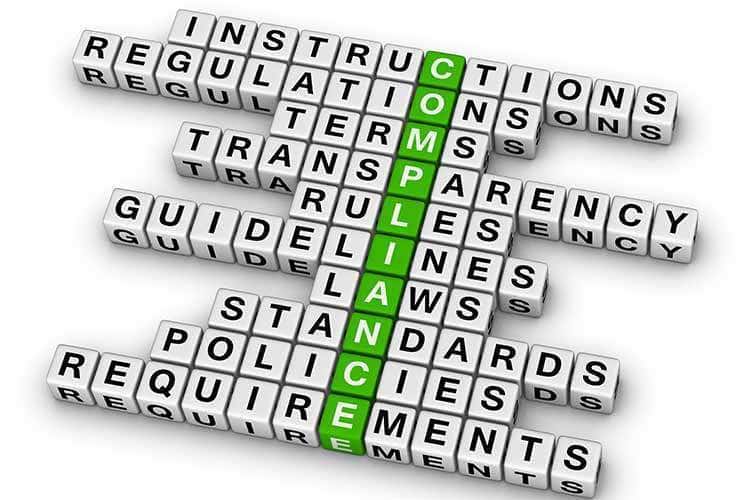-
5 Painless Steps To Create An Effective Vendor Compliance Policy (And Why You Should Bother)
Maybe you’ve never thought about creating a vendor compliance policy. You place an order, the vendor delivers it. Pretty simple most of the time. You’ve got purchase orders to provide legal documentation if there’s a problem with the order and that seems like enough.
But what happens when there’s a price increase, cyber security breach, or late delivery? Or the wrong product arrives or they keep mixing up PO numbers? Well, then you’re at the mercy of your vendor’s customer service. That is unless you have a vendor compliance policy outlining your expectations from vendors.

Step 1: Decide What You Need
What you include in your vendor compliance policy will depend on your company’s size, industry, and needs. For example, if your company’s production schedule would be held up by regular back-orders, you’ll want to focus on creating a policy that ensures on-time delivery. But you’re probably not going to need such strict cyber security protocols as those used by the U.S. Department of Defense.
Take some time to consider what your company’s priorities are and what role your vendors play. If you’ve had problems with vendors in the past, make note of that so you can include ways to prevent similar issues in the future.
Step 2: Make A List
Once you have an idea of what you want to accomplish, start listing specific elements you will address in your company’s policy. These can include
- Your company’s history, vision, goals, and expectations
- Customer service standards
- How you’ll respond to orders that aren’t delivered on-time or in the agreed upon condition/quality
- Whether or not you accept substitution products in a delivery
- Product packaging specifications and case labeling guidelines
- Accounting and paperwork requirements, including your preferred method for receiving paperwork (electronic or paper POs, etc)
- Routing guidelines to help reduce costs
- Schedule of charge-backs you will level for noncompliance
- How you expect vendors to protect your sensitive data
- A contact list so vendors will have the information to easily contact departments like merchandising, accounts payable, and inventory control
Step 3: Consider Your Vendors
You also need to keep your vendors in mind when working on your compliance policy. There has to be a realistic balance that lets the vendor compliance policy protect your company without making it impossible for people to do business with you.
Ideally, a vendor compliance policy benefits both parties and strengthens your relationship with vendors. A well-defined policy can cut back on wasted time, lower costs associated with delivery, support accurate communication, and lead to higher customer satisfaction.
Step 4: Schedule Charge-Backs
Without penalties for vendors who won’t follow your policies, you won’t be able to enforce compliance. The charge-backs should be based either on manpower (a cost-per-hour for you to resolve the issue) or per infraction (a flat-fee for different non-compliance issues).
Don’t look at non-compliance fees as a revenue generator. And make sure your vendors know you’re not trying to make money off of them. You’d much rather have them comply with policy than pay the fees.
Step 5: Implement Your Policy
Once you have a vendor compliance policy, you’ll ask new vendors to sign-off on it before doing business with you. But for established vendors, implementing your policy can take several months. Take the time to meet with vendors and explain why you’re implementing this policy, then give them time to change anything they’d need to in order to comply.
Implementing a vendor compliance policy will also have ramifications throughout your company. For one thing, it supports business process automation since having all your vendors in compliance with an agreed upon standard helps streamline purchasing, receiving, and accounts payable. If you’re not using automation yet, you can get in touch with us to schedule a demo and learn more about how it can help your company.